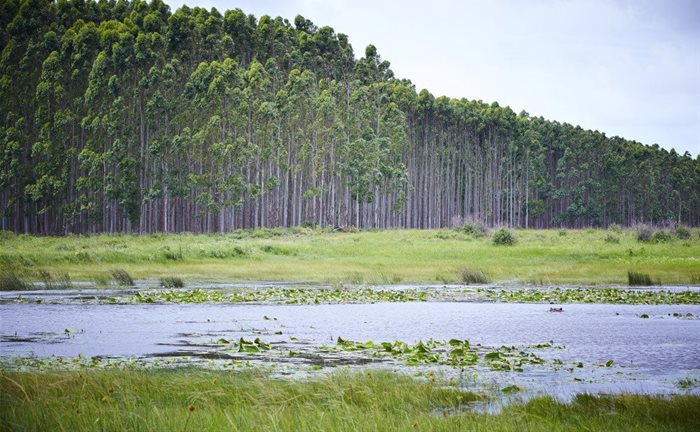It's fair to say that most people when thinking about the resources we have to fight climate change don't immediately think of forestry. But there is a climate case for wood - it is the only material that can naturally and significantly decarbonise our planet by driving down demand for illegally harvested wood and provide functional alternatives to non-renewable materials that have significantly higher environmental footprints.

Source: Supplied
Industrial forestry isn’t the destructive force it once was. Instead, it is a sustainable forest bioeconomy, harvesting renewable products that can be recycled. And, once those products have reached end use, the carbon can be a source for bio-energy.
Forestry achieves this both through the growing of trees, which sequesters carbon, but also by harvesting them at the right time, with carbon being stored in harvested wood products. Wood can also be a substitute for carbon-intensive materials such as steel and concrete in construction, and plastic and textiles in a variety of applications.
But it is also present in everyday life in the form of paper products, packaging and cellulose – in our detergents and pharmaceuticals, and long-life wood products (e.g., textiles produced from wood fibre and timber in buildings).
Forests and climate change
As discussed at a panel during a Cop26 side event last year, part of the problem is that forests are usually discussed in the realm of land-use change and forestry, and the economy is discussed separately - when in fact, they are inextricably linked. In addition, discussions around the circular economy don’t consider carbon recycling and the displacement of fossils.
According to The Forest Carbon Debit Illusion report, there is a greater net removal of carbon dioxide from the atmosphere when forests or plantations are actively managed through the cyclical and sustainable planting, growing and harvesting of trees.
In essence, the missing piece of the puzzle is that active forestry produces two major climate benefits when combined with efficient value chains. First, there is stable and increasing carbon storage both in the forest itself, and in the products of forestry. According to the Food and Agriculture Organisation’s (FAO) Forest Resource Assessment 2015, forests in the world were sequestering close to 300 Gigatonnes of carbon.
Younger trees take up more carbon dioxide than their older counterparts. And second, all wood-based products – soluble, fibre and bio-energy products such as nanocellulose, paper packaging, timber for construction and wood-derived chemicals can displace fossil-based alternatives in a variety of sectors.
Of course, deforestation must be reduced in the context of indigenous or tropical forests. At the same time, many vilify the forestry sector without understanding its circularity, its ability to store carbon and crucially, how it helps to cut back on fossils.
Innovation in the forestry space
Climate change is not caused by people in developing countries felling trees. Instead, it’s caused by high- and middle-income countries burning fossils. We need to focus on the contribution of forestry to displace these fossil emissions.
We will do this by growing a circular bio-economy - by substituting common materials that are fossil-based or non-renewable, with alternatives that come from wood. There are three areas of innovation for the forest sector in this space.
First, we should aim to increase uptake of wood products in traditional markets such as construction and packaging, most typically paper. Second, we need to find more new applications for wood fibre, to really go into niche markets, such as the use of lignin for batteries for electronics.
Finally, we need to maximise the circularity aspect of the circular bioeconomy, which is also an area where innovation is needed to increase recycling, cascading use of wood, re-use, etc..
Globally, our sector has access to a wide range of data and information. Not only in terms of trade and production statistics, but also that there is a variability across tree species and regions. We also know that how wood products – such as paper – are disposed of makes a difference.
Paper recycling and wood reuse is key to ensuring that carbon remains locked up. And we know that wood-based products are associated with lower greenhouse gas emissions over their entire lifecycle compared to similar products made from emissions-intensive materials.
South African ecosystems are not tree dominated. We only have half a million hectares of indigenous forests, which are fragmented and occur along the south and eastern coastal inland mountains, and importantly, they are protected. It’s also important to understand that different regions will have different forestry practices.
How forestry can help curb climate change
We plant fast-growing exotic tree species to produce timber, and currently have 1.2 million hectares of these industrial plantations. It must also be noted, however, that 25% of forestry owned land is not planted to trees, but home to wetlands, grasslands, indigenous forests and area of high conservation value.
It’s unlikely that the world’s natural forests will be able to meet global wood demand. On the other hand, industrial plantations, if established on degraded land, can improve the land, sequester carbon, and facilitate the circular economy by providing materials that can replace fossil-based chemistry.
Furthermore, we can adapt more easily to climate change because of shorter harvesting cycles, which will allow us to replant with different genotypes, and we can demonstrate in South Africa that having commercial plantations has prevented the increased use, destruction, and degradation of natural forests.
Michele Francis 9 Apr 2021 This speaks to the heart of the way South African forests are managed – sustainably and responsibly, treating the renewable resource of wood and the resources that trees share with consideration.
It speaks to the fact that the sector doesn’t harvest swathes of trees, leaving the land desolate for years. Forestry companies have nurseries growing more trees that will take the place of those gone before, most often at a ratio of 2:1. Even harvesting residues are left behind to enhance soil fertility and protection.
Finally, harvesting wood makes the circular bio-economy possible. If we don’t have sustainably grown and sourced wood, we can’t replace fossil-based products and do all of the things that climate adaptation demands.





















































